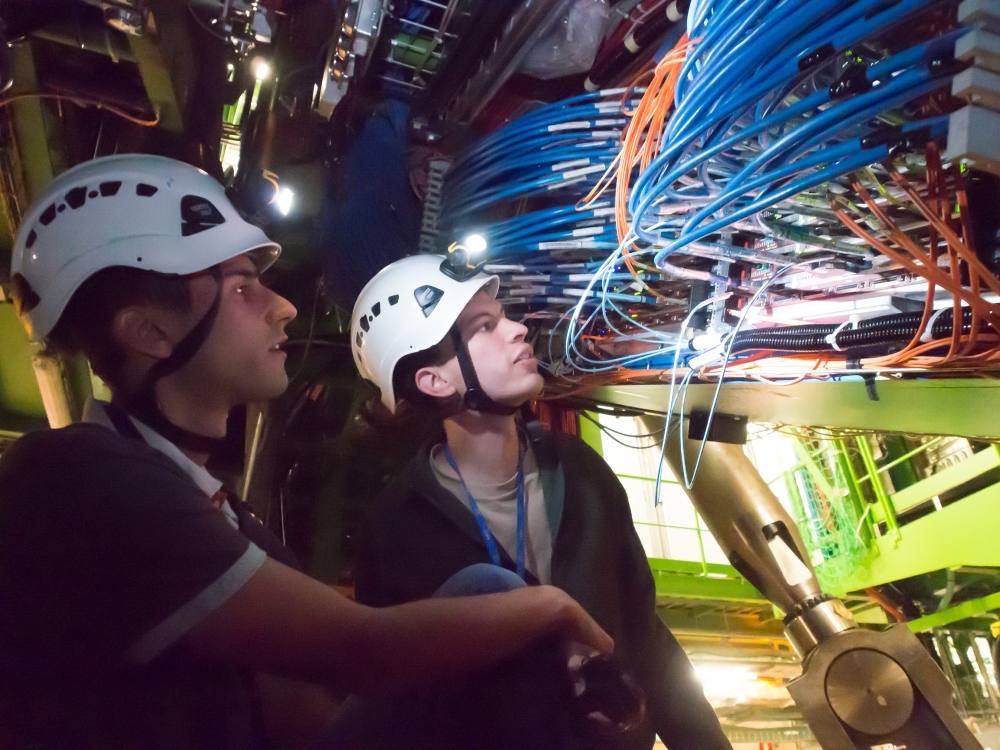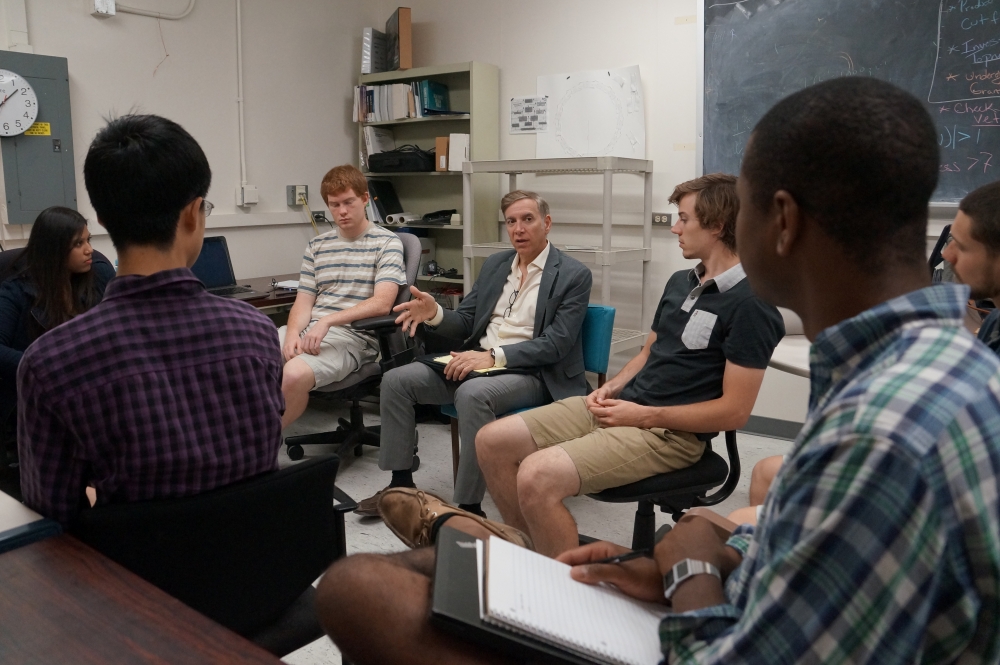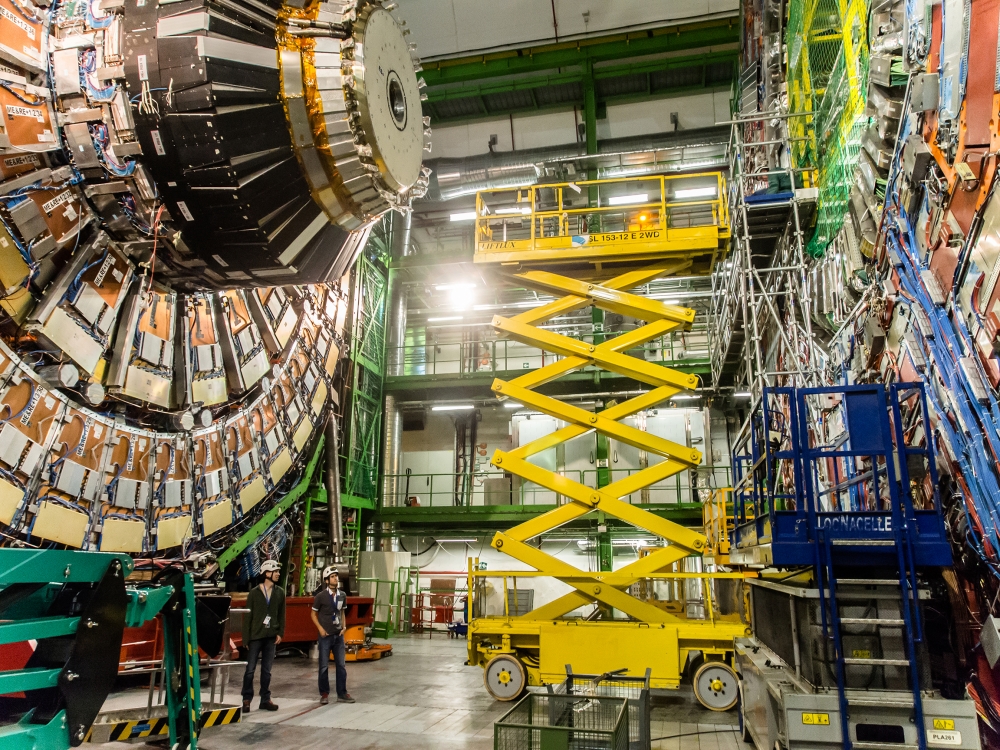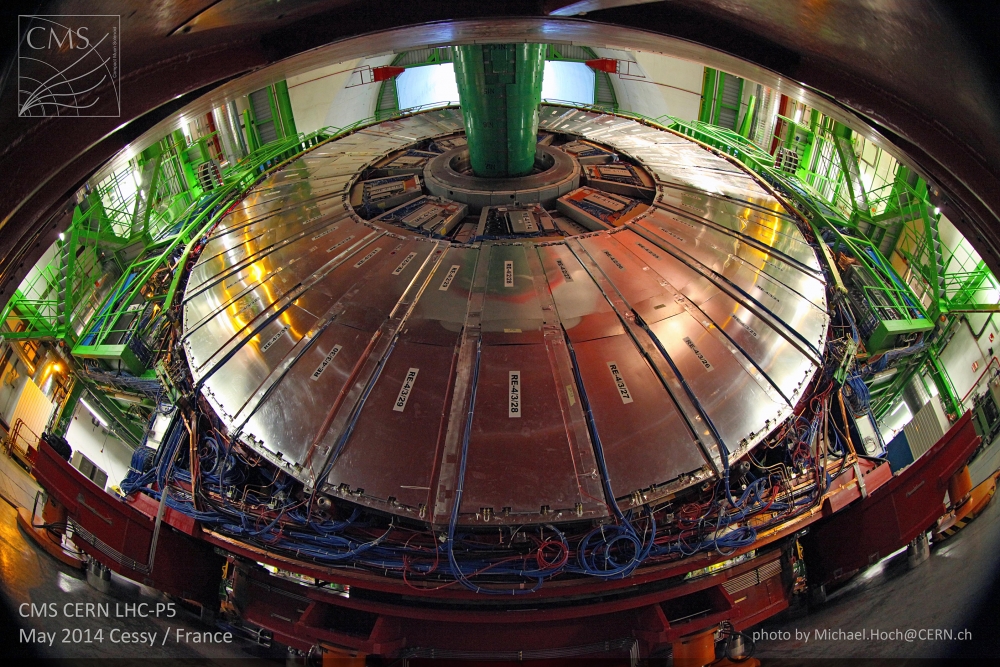Once More Unto the Breach
After two years spent undergoing repairs and upgrades and a few eleventh-hour adjustments, the world’s largest and most powerful particle accelerator is back in action. The Large Hadron Collider (LHC), located at the European Organization for Nuclear Research (CERN) near Geneva, Switzerland, came back online Sunday, April 5, and will be commissioned over coming weeks to be ready by June, if not sooner, to smash particles and to provide scientists from all over the world with data to help them uncover the deepest secrets of the universe.
“We are on the threshold of an exciting time in particle physics,” said Fleming Crim, National Science Foundation assistant director for mathematical and physical sciences. “The LHC will turn on with the highest energy ever achieved; this energy regime will open the door to new discoveries about our universe that were impossible as recently as two years ago.”
Not that the discoveries of a few years ago aren’t already impressive. In 2012, CERN scientists at the Compact Muon Solenoid (CMS) and the ATLAS detectors at the LHC reported the discovery of the highly sought Higgs boson, a subatomic particle said to be responsible for the masses of elementary particles.
The UCSB Experimental High Energy Physics Group plays a strong role in the CMS project. Led by four faculty members in UCSB’s Department of Physics — Claudio Campagnari, Joe Incandela, Jeffrey Richman and David Stuart — the UCSB team consists of about 30 graduate students, postdoctoral researchers, engineering staff and undergraduate students. Their broad range of activities includes involvement in the detector’s design, construction and operations, software development, data analysis and the management of several parts of the experiment.
“The Higgs — it was hard to find,” said Incandela, who led the CMS experiment at the time of the Higgs discovery and made the historic announcement confirming the existence of the particle and validating a 50-year-old hypothesis that earned its theorists the Nobel Prizes in physics.
Located underground in Switzerland and France, the LHC is a particle accelerator in a 17-mile circular tunnel in which proton beams are accelerated to incredibly high speeds and smashed into each other, creating matter from energy. Located at different points in the tunnel are several particle detectors tasked with observing the signals given off by decaying particles that could identify what kind they are. Certain ones, such as the Higgs boson, emit rare signals in their decay processes that are the target of these detectors. To find these particles is to find pieces of a puzzle that contribute to an emerging model of the universe.
But the discovery of the Higgs boson was only the threshold to more mysteries. While scientists and particle physics fans all over the world rejoiced at the discovery of the peculiar boson, there remain unanswered questions that tug at prevailing assumptions of supersymmetry.
A Mirror Reflection
Supersymmetry is a basic symmetry that connects the two classes of elementary particles — bosons and fermions. It posits that every known fundamental fermion or boson is tethered, as it were, to a corresponding hypothetical partner — a superpartner — that is a boson or fermion, respectively.
“It’s like a mirror reflection of the known particles in our universe, but the mirror is slightly distorted so that the particles seen in the mirror are slightly different,” Incandela said. These hypothetical hidden partners provide a balancing aspect of nature that explains why some known particles can exist at their weight and spin without destabilizing the universe.
Supersymmetry also predicts particles that could be the dark matter in the universe.
“The ordinary matter we see constitutes only about 15 percent of the mass of the universe,” said Incandela. The other 85 percent, the matter we can’t see — dark matter — could be composed of supersymmetric particles.
“It’s a beautiful, elegant, ideal description of nature, and scientists love simplicity,” Incandela said. It was widely believed that a particularly simple and powerful version, called the Minimal Supersymmetric Standard Model (MSSM), was the most likely candidate for the explanation of the underpinnings of the universe prior to the startup of the LHC in 2009.
However, the universe does not yield her secrets so easily. If all went according to the models, with the technology on hand the researchers would have been expected to find evidence for superpartners before they found the Higgs. Not having seen them has caused scientists to reconsider their beautiful orderly vision of the universe and how nature works.
Needle in a Haystack
But it’s not the end of supersymmetry. What’s important to remember, said Incandela, is that supersymmetry is not a single theory but a framework upon which various theories can be formulated.
Upgrades and repairs performed on the LHC and its detectors over the last two years will give scientists a wider field to search through. For one thing, the proton beams that travel around the underground tunnel will be more intense, colliding with the energy of an almost unfathomable 13 Tera-electron-Volts (TeV), 60 percent higher energy than any accelerator has ever before achieved.
The heightened energy is necessary to find the heaviest particles, explained Incandela. The higher the energy, the greater the masses of the particles that can be formed from that energy, consistent with Einstein’s famous equation relating mass to energy: E=mc2. More collisions at higher energies increase the likelihood that rare processes will occur in a given running period that can be observed by the detectors.
“It’s really signal over noise,” Incandela said of the very rare final states that the scientists are searching for against the backdrop of hundreds of millions of high-energy collisions per second. “I think supersymmetry has to be there,” he said, “but it doesn’t have to be where we can find it easily.”
Among the particles the CMS also has its sights on is the hypothetical top partner, the supersymmetric counterpart to the heaviest known particle, the top quark. A decaying top partner, according to theory, could yield a top quark and another particle called a neutralino, which could be dark matter.
As parts of the LHC are commissioned in the coming weeks, the UCSB professors involved, along with their cadre of postdocs, grad students and undergraduate interns, are preparing to study the data generated by the high-energy collisions. They join more than 1,700 U.S. scientists in the international CMS collaboration spanning 42 countries to continue the search for supersymmetry.
The UCSB Experimental High Energy Physics Group is strongly supported through a grant from the U.S. Department of Energy.







